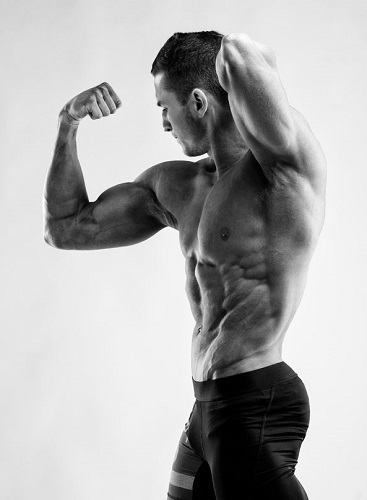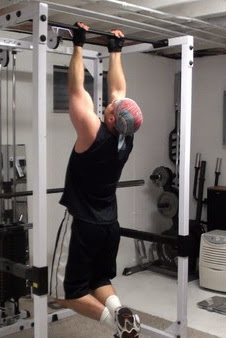“How Do Functional Foods Help To Keep You Healthy And Your Energy Levels High?”
Functional foods may have physiological benefits or reduce risk of chronic disease beyond nutrition…
May be functional foods look similar to foods consumed as part of your regular diet?
Functional foods?
Is it a better way to choose zero processing and loads of flavor?
Are these functional foods with extra ‘healthy’ ingredients added?
Is it the answer to a range of conditions from high cholesterol to iodine deficiency?
But are they real health food or just hype?
Hmn…are you one of many which primarily eat processed foods?
What’s more important to you?
For example, do you even realize what exactly it is you’re eating?
You see, there is a very important overlooked recent study…
This study revealed consumers drinking soda were ingesting more fructose than labels showed.
No big deal right?
Did you know most sodas and sweetened beverages including juices…
Are almost entirely marketed and consumed by growing children!
And these do not list high fructose corn syrup on the label.
Listen, many drinks were found to contain more fructose than beverages which did list on the label.
What if you found what ends up being consumed in these beverages is neither natural sugar nor HFCS?
In other words, a chemical concoction of fructose-intense which could increase your risk for diabetes…
Including cardiovascular disease and liver disease.
This is ONLY one example of the many lies and mistruths you are exposed to on a daily basis.

Perhaps you think this is another good news story by the food industry…
Lets just step back for a moment and look at the facts vs fantasy.
You already know eating at “fast food” restaurants is positively associated with households with children right?
And high fat diet with body mass index (BMI) is increasingly important…
Especially for our children’s health.
So does it make sense the food companies labeling is not accurate?
The average American consumes 23 teaspoons of added sugars and sweeteners per day.
Matter of fact when AHA recommendation is 5 to 9 teaspoons daily for adults.
It is okay for children to consume 15 teaspoons of sugar per day…
How inaccurate and deceitful is the food industry?
In 2008 eight fast food hamburgers were scientifically assessed.
The assement was organized to determine hamburgers actual content.
The results…
Fast food hamburgers do not contain hardly any meat (median, 12.1%).
Approximately half of weight is made up of water.
Unexpected tissue types found in some hamburgers included:
- Bone
- Cartilage
- Plant material
- Sarcocystis parasites
(tests discovered findings in 2 hamburgers)
This means 25% of hamburgers contain parasites!
Do you need to pay attention…
Just ask yourself what are the underlying motivates?
Is it detrimental to eat genetically modified organisms (GMOs)?
Did you know 88% of corn and 93% of soybeans are genetically modified?
Compare this with less than 20% of crops genetically modified in 1996 (18 years ago).
This is what the food industry says is self-regulation…
And this is how to openly sell unhealthy foods in schools, label and market to our children.
Only one periodic assessment to determine compliance is being met.
And this has been funded by their own industry, not a third party group.
You know food companies operate just like tobacco companies…
Which should come as no surprise since Philip Morris bought Kraft Foods in 1988.
Did you notice how easy and profitable it is to combining emerging food science…
And increasingly use ruthless marketing tactics by big tobacco companies.
Who do you think owns the BIG food companies…
And the invention and heavy-handed widespread push of high fructose corn syrup?
It must be all coincide right?
Nothing at all with the timing of current obesity pandemic!
A so called non-existent “pandemic” which has skyrocketed since 1970s.
So why do you wnat to pay attention to food additives and preservatives?
Just maybe some may be harmful to your body?
Took a closer look and decide for yourself:
- Butylated hydroxyanisole (BHA)
- Propyl gallate
- Aspartame
- Monosodium glutamate (MSG)
- Acesulfame-K
- Olestra
- Potassium bromate
- Saccharin
- Sodium sulfite
When you’re making so called healthy functional food choices…

YES! You’ve heard it all before and you’ll hear it again…
Simply eat your fruits and vegetables!
There is no doubt a diet with plenty of fruits and vegetables offers a whole host of health benefits.
This includes protection from:
- Heart disease
- Stroke
- High blood pressure
- Some types of cancer
- Eye disease
- Gastrointestinal problems…
Eating healthy can be part of an alternative treatment against illness.
In addition, fruits and vegetables can positively help fight back effects of aging.
It is know some fruits and vegetables are good natural sources of vitamin A.
And others are rich in vitamin C, folate, and potassium.
Vegetables have antioxidants, minerals and phytochemicals.
What you’re looking for is actual color of vegetables.
This helps your body’s immune system to fight toxins and inflammation.
Almost all are naturally low in fat and calories, none have cholesterol…
And many are great sources of fiber.
Fruits and vegetables also add wonderful flavors, textures and colors to your diet.
Phytochemicals are bioactive non-nutrient plant compounds in fruit, vegetables, grains and other plant foods.
These have been linked to reductions in risks of major chronic diseases.
It is estimated more than 5000 phytochemicals have been identified.
Still a colossal percentage remains unknown and need to be identified before their health benefits are fully understood.
However, more and more convincing evidence suggests real benefits…
The phytochemicals in fruit and vegetables may be even greater than is currently understood.
This is because oxidative stress induced by free radicals is involved in etiology of a wide range of chronic diseases.
Most people should aim for at least nine servings (4½ cups) of vegetables and fruits a day.
Go for a variety of kinds and colors of produce to give your body a mix of nutrients it needs.
Best choices are dark leafy greens, cooked tomatoes and rich yellow, orange or red colors.
If you care about your health you’d want to eliminate as many of these additives…
As many as possible right?
Does it require you to do a little more research?
Yes! A little…
However are the results are even more accurate?
You better believe it. 🙂
Ultimately if you want to reap health of benefits from eating and and exercising.
Just maybe it pays to eat real functional foods!
First step is to read and understand the ingredient list…
Your body knows exactly what you are eating.
In fact you are what you eat so make the smart choice easy.
Go for simple and most delicious foods which are natural and actually good for you.
So, functional foods are they a healthy choice or hype?
Functional Foods
REFERENCES:
1. Eicher-miller HA, Fulgoni VL, Keast DR. Contributions of processed foods to dietary intake in the US from 2003-2008: a report of the Food and Nutrition Science Solutions Joint Task Force of the Academy of Nutrition and Dietetics, American Society for Nutrition, Institute of Food Technologists, and International Food Information Council. J Nutr. 2012;142(11):2065S-2072S.
2. Nyenje ME, Odjadjare CE, Tanih NF, Green E, Ndip RN. Foodborne pathogens recovered from ready-to-eat foods from roadside cafeterias and retail outlets in Alice, Eastern Cape Province, South Africa: public health implications. Int J Environ Res Public Health. 2012;9(8):2608-19.
3. Available at: //www.nutritionjrnl.com/article/PIIS0899900714001920/. Accessed June 29, 2014.
4. Skatrud-mickelson M, Adachi-mejia AM, Mackenzie TA, Sutherland LA. Giving the wrong impression: food and beverage brand impressions delivered to youth through popular movies. J Public Health (Oxf). 2012;34(2):245-52.
5. Available at: //www.theguardian.com/world/2014/feb/07/fake-food-scandal-revealed-tests-products-mislabelled. Accessed June 29, 2014.
6. Jeffery RW, Baxter J, Mcguire M, Linde J. Are fast food restaurants an environmental risk factor for obesity?. Int J Behav Nutr Phys Act. 2006;3:2.
7. USDA, ERS (2012) Loss-Adjusted Food Availability.
8. American Heart Association (2009) Dietary Sugars Intake and Cardiovascular Health.
9. Available at: //www.bbc.com/news/health-27941325. Accessed June 29, 2014.
10. Prayson B, Mcmahon JT, Prayson RA. Fast food hamburgers: what are we really eating?. Ann Diagn Pathol. 2008;12(6):406-9.
11. USDA, ERS (2012) “Genetically engineered varieties of corn, upland cotton, and soybeans, by State and for the United States, 2000-12.”
12. USDA, ERS (2012) Adoption of Genetically Engineered Crops in the U.S.
13. Sharma LL, Teret SP, Brownell KD. The food industry and self-regulation: standards to promote success and to avoid public health failures. Am J Public Health. 2010;100(2):240-6.
14. Brownell KD, Warner KE. The perils of ignoring history: Big Tobacco played dirty and millions died. How similar is Big Food?. Milbank Q. 2009;87(1):259-94.
15. Available at: //abcnews.go.com/Business/story?id=88088. Accessed June 29, 2014.
16. Available at: //www.nytimes.com/2013/02/24/magazine/the-extraordinary-science-of-junk-food.html. Accessed June 29, 2014.
17. Caballero B. The global epidemic of obesity: an overview. Epidemiol Rev. 2007;29:1-5.



























